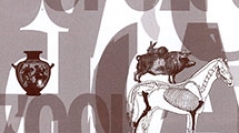

 Anthropozoologica
49 (1) - Pages 33-46
Anthropozoologica
49 (1) - Pages 33-46The quantity and variety of animals contributing to foodways and landscapes, often are overlooked in studies of urban experiences after AD 1500 in North America. Charleston, South Carolina (USA) was founded in its present location in 1680 and the Charleston faunal assemblage reviewed here was deposited between 1692 and the early 1900s at multiple sites. It contains over 134,000 specimens (NISP) and the remains of an estimated 2,174 individuals (MNI) from 152 vertebrate taxa. This large faunal assemblage demonstrates that the urban setting contained a rich mosaic of people and animals with some of these animals filling multiple roles in that landscape. Non-commensal wild and domestic animals contributed to a unique lowcountry cuisine and many of these same animals, in addition to commensal ones, lived in the city. Many aspects of the urban environment were designed to accommodate and restrict these animals. The activities of animals shaped, and were shaped by, the developing urban environment. Unlike other environmental components, though, the animals were active players in the affairs of daily life and efforts to control them varied in their success.
Urban wildlife, Charleston, South Carolina, zooarchaeology, post-medieval archaeology, historical archaeology